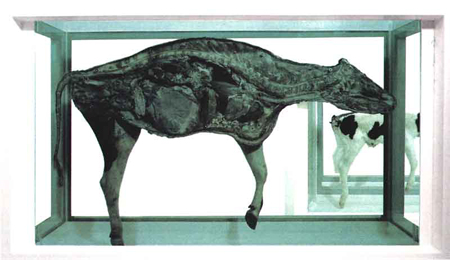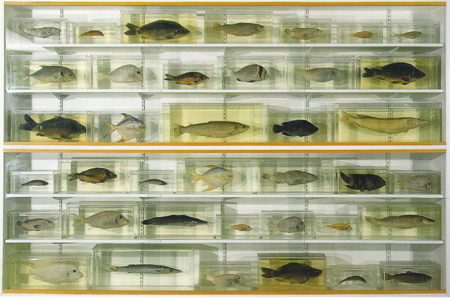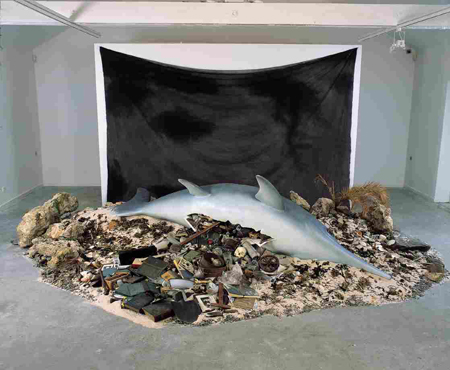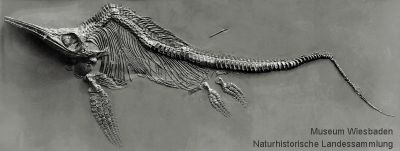The Turning Point of Life
april 19th, 2007Damien Hirst
Mother and Child, Devided, 1993

The impulses driving Damien Hirst’s work stem from dilemmas inherent in human life: ‘I am aware of mental contradictions in everything, like: I am going to die and I want to live for ever. I can’t escape the fact and I can’t let go of the desire’. The materials he uses often shock, but he says he ‘uses shock almost as a formal element . not so much to thrust his work in the public eye . but rather to make aspects of life and death visible’.
Fritjof Capra
The Systems View of Life, 1982
Chapter 8 of the “Turning Point”
As the notion of an independent physical entity has become problematic in subatomic physics, so has the notion of an independent organism in biology. Living organisms, being open systems, keep themselves alive and functioning through intense transactions with their environment, which itself consists partially of organisms. Thus the whole biosphere – our planetary ecosystem – is a dynamic and highly integrated web of living and nonliving forms. Although this web is multilevel, transactions and interdependencies exist among all its levels.
Most organisms are not only embedded in ecosystems but are complex ecosystems themselves, containing a host of smaller organisms that have considerable autonomy and yet integrate themselves harmoniously into the functioning of the whole. The smallest of these living components show an astonishing uniformity, resembling one another quite closely throughout the living world, as vividly described by Lewis Thomas.

Damien Hirst I Want You Because I Can’t Have You, 1992
There they are, moving about in my cytoplasm…..They are much less closely related to me than to each other and to the free-living bacteria out under the hill. They feel like strangers, but the thought comes that the same creatures, precisely the same, are out there in the cells of seagulls, and whales, and dune grass, and seaweed, and hermit crabs, and further inland in the leaves of the beech in my backyard, and in the family of skunks beneath the back fence, and even in that fly on the window. Through them, I am connected: I have close relatives, once removed, all over the place.
Although all living organisms exhibit conspicuous individuality and are relatively autonomous in their functioning, the boundaries between organism and environment are often difficult to ascertain. Some organisms can be considered alive only when they are in a certain environment; others belong to larger systems that behave more like an autonomous organism than its individual members; still other collaborate to build large structures which become ecosystems supporting hundreds of species.
Read the rest of this entry »

